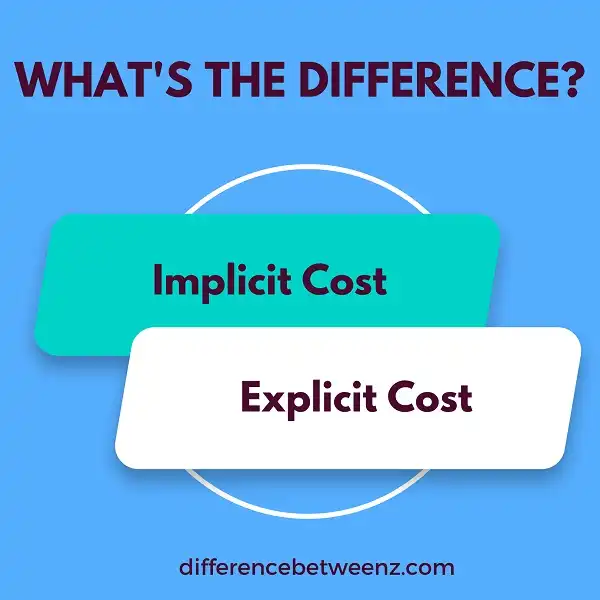Implicit cost and explicit cost are two different types of costs that a company can incur. Implicit cost is the value of the next best alternative use of the company’s resources, while explicit cost is the actual monetary expenditure for a good or service. It’s important for business owners to understand these differences, as each type of cost can have an impact on their bottom line. In this blog post, we’ll take a closer look at each type of cost and discuss how they can impact a business. We’ll also provide some examples to help illustrate these concepts. Thanks for reading!
What is Implicit Cost?
Implicit cost is the opportunity cost of using a resource in one way rather than another. For example, if someone has $100 and can either use it to buy a new car or invest it in a savings account, the implicit cost of buying the car is the interest that could have been earned on the $100 if it had been invested.
In essence, the implicit cost is the cost of forgoing an alternative course of action. Implicit costs are important to consider when making decisions because they represent a real cost even though they are not always directly observable or quantifiable. By taking into account both explicit and implicit costs, individuals and businesses can make more informed decisions that maximize their profits.
What is Explicit Cost?
Explicit costs are those that are clearly and directly associated with the production of a good or service. In other words, explicit costs are those that the firm must pay out in order to produce its output. Explicit costs include things like raw materials, labor, and energy.
- They also include things like depreciation on factory equipment. Explicit costs are sometimes referred to as “out-of-pocket” expenses. This is because they represent actual cash outflows that the firm must incur in order to produce its output.
- While explicit costs are undoubtedly important, they are not the only costs that a firm incurs while producing a good or service. The firm also incurs implicit costs, which are not always as easy to see or quantify. Implicit costs represent the opportunity cost of using resources that could be employed elsewhere.
- For example, if a firm uses its own factory to produce a good, then the opportunity cost of using the factory is the value of the output that could have been produced if the factory had been used for something else.
In general, explicit costs are easier to identify and quantify than implicit costs. However, both types of costs must be considered when making decisions about production and pricing.
Differences between Implicit Cost and Explicit Cost
- Implicit cost is the opportunity cost of using resources that are owned by the company. It includes forgone earnings from using company resources for other purposes. For example, if the company decides to use its factory to produce bicycles instead of cars, the implicit cost would be the earnings lost from not producing cars.
- Explicit cost is the out-of-pocket cost of running the business. It includes money spent on labor, materials, and other expenses. For example, if the company spends $100 on labor and $200 on materials, the explicit cost would be $300.
- Implicit and explicit costs are both important in decision-making. However, implicit costs are often more difficult to quantify than explicit costs. As a result, companies may place greater emphasis on explicit costs when making decisions about how to use their resources.
Conclusion
Implicit and explicit costs are both important to understand when making business decisions, but they are calculated differently. It is important to be aware of the different types of costs associated with a decision in order to make an informed choice.


